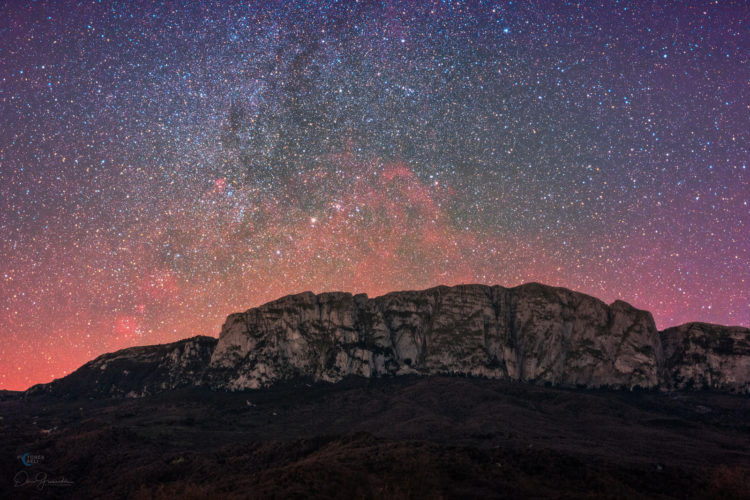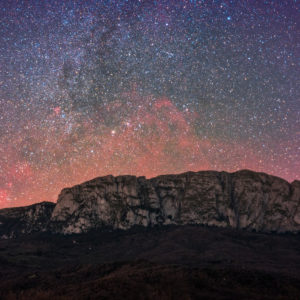Winter Milky Way Above Rocca Busambra
Description
A photo composite of two exposures for the ground and sky. From the photographer: “There is no doubt that the Milky Way is the structure of the universe visible to human eyes that fascinates us the most. It is full of stars, emission nebulae, dark nebulae and many other deep sky objects. To distinguish the constellations and star formations that make up the Milky Way we usually mention it based on the time of year: the summer Milky Way and the winter Milky Way.
While the first houses the galactic center showing its richness in terms of stars and objects, the second is more tenuous and almost elusive but no less beautiful thanks to constellations such as that of Orion and Canis Major. However, how many have ever paid attention to its structure and to the objects present in it just below the constellation of Canis Major? Few, at least in the American and European latitudes. At these latitudes, the Milky Way reaches the horizon near the constellation of Puppis, Pyrix and Columba. Often its structure is hidden by the glare of light pollution or influenced by the atmospheric thickness above the horizon. In this image, this portion of the Milky Way shows very interesting structures in terms of both dark nebulae and emission nebulae. Among the various deep-sky objects stand out NGC2477 and NGC2546 (single open clusters), NGC2451 (a double open cluster) and GUM14, 15 and 17 (emission nebulae in the constellation of Vela). Above you can see the southernmost stars of the constellation of the Canis Major including Adhara and Furud. The scene takes place in the sky of Sicily above the Rocca Busambra.
To recognize the constellations main stars and deep objects, move the slider on the image.”
Technical details: Canon 6d, Sigma 50mm, 1 min, iso 800, f/2




comments (0)